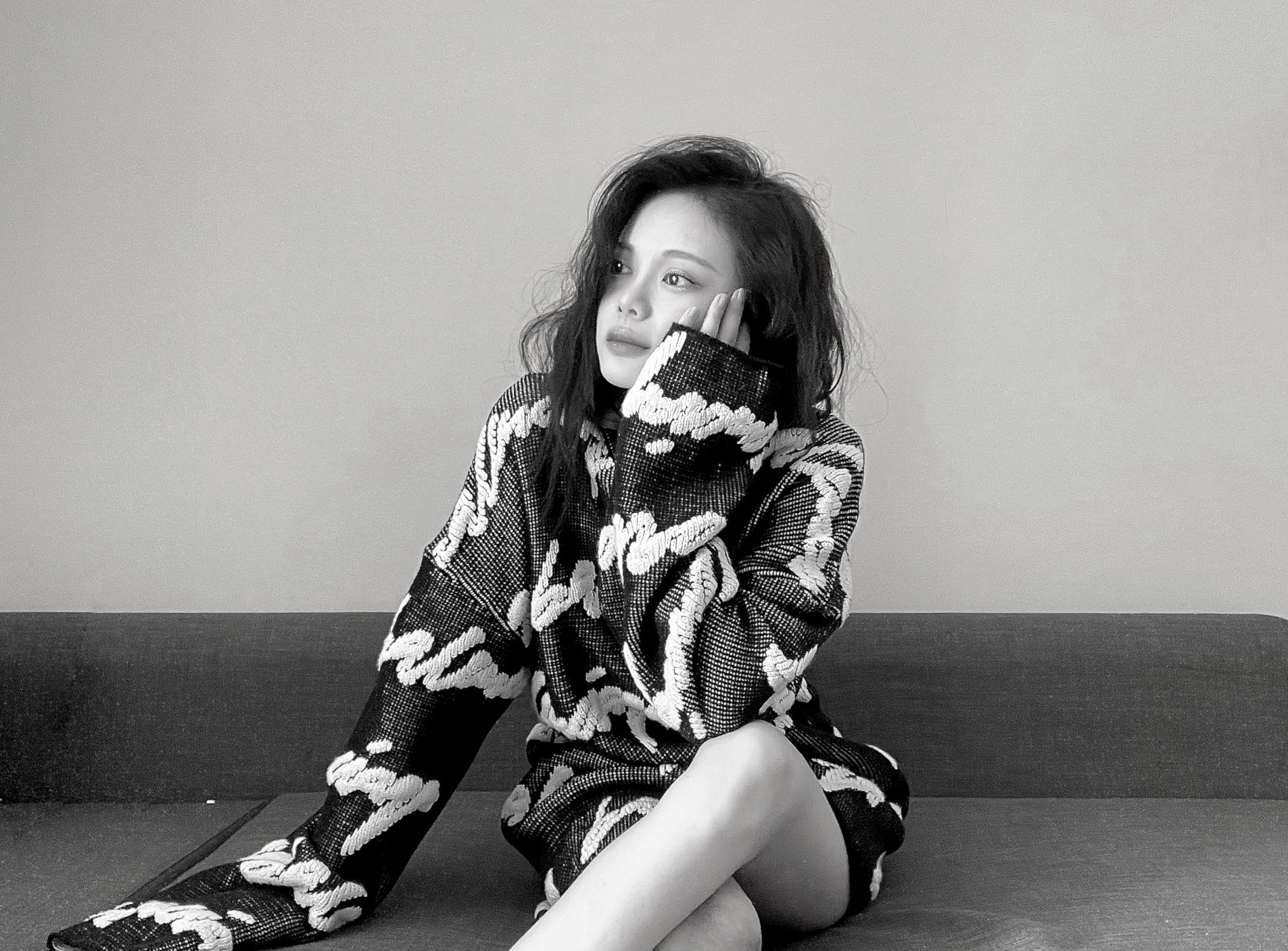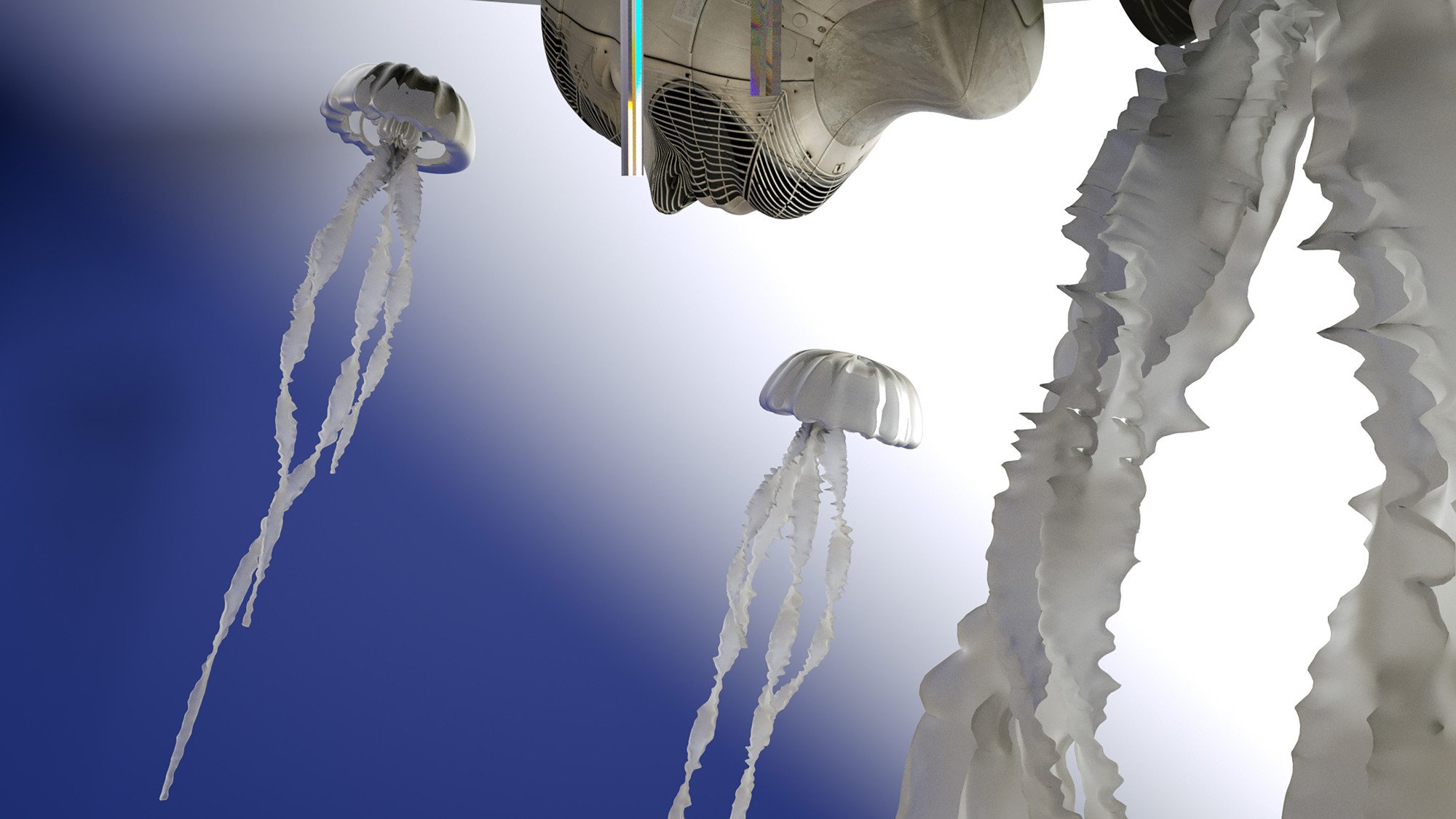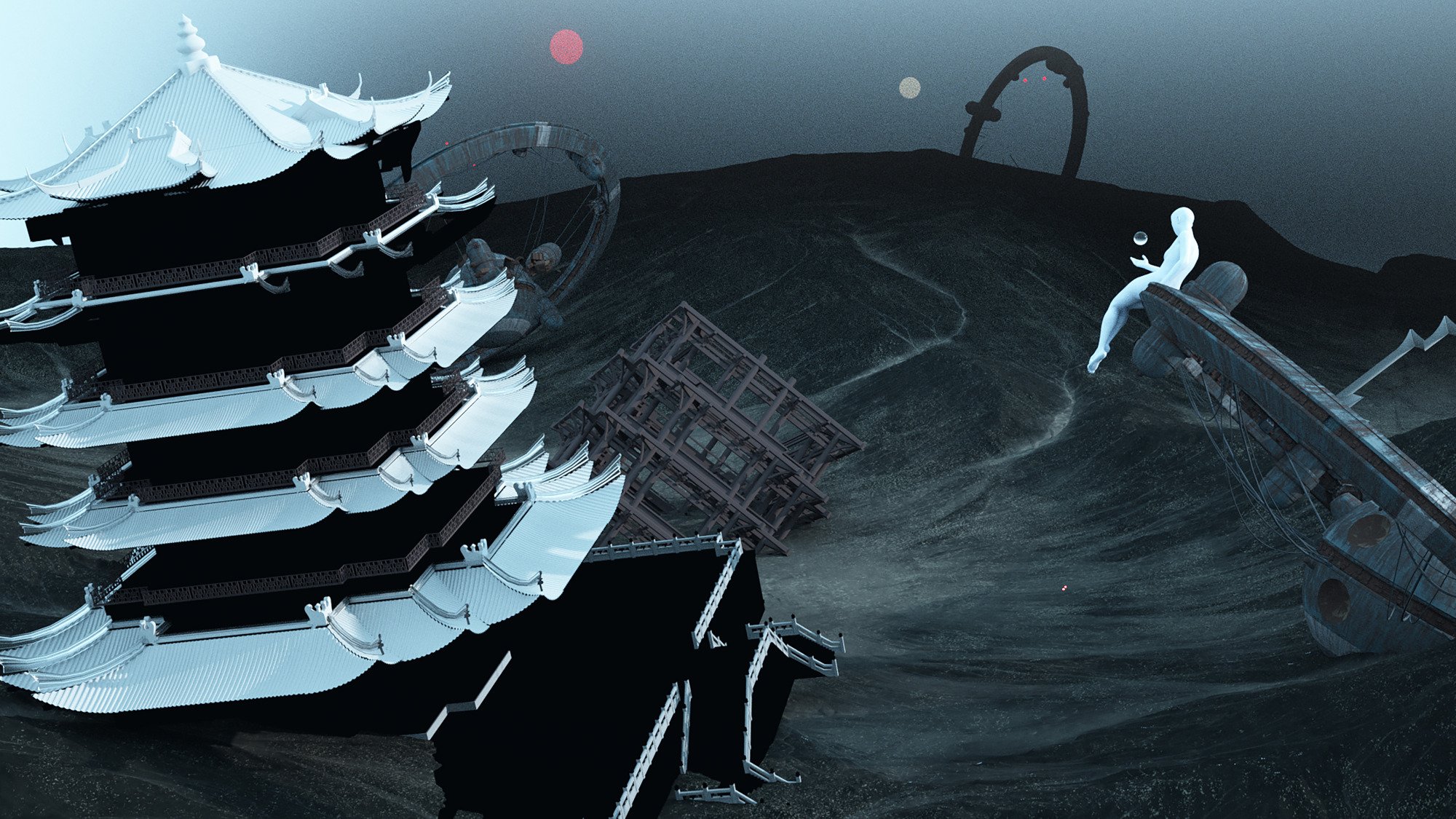10 Questions with Shan Xu
AL-TIBA9 ART MAGAZINE ISSUE11 | FEATURED ARTIST
Shan Xu is a Multi-Media artist based in San Francisco and Beijing.
Shan is an experimental, future-oriented new media artist whose passion lies in challenging cultural stereotypes and social preconceptions through building experiences of future-present intersections. Her works expand technologies' possibilities to address "digital and natural" challenges. Her works inspire conversation through a digital and natural conflict lens and empower her audience to reflect.
Artist, filmmaker, and AXW Film Festival founder Lily White invited the WABI-SABI digital video to exhibit at the AXW Film Festival in 2020. She said, "Shan Xu's film WABI-SABI was inspired by ASIAN philosophy, which states that life is transitory and fleeting. It is an animation using drawings she made with a surreal graphic quality. The film's title, WABI-SABI, is a term from traditional Japanese aesthetics, which describes beauty as imperfect, impermanent, and incomplete."
Shan Xu - Portrait
ARTIST STATEMENT
Humans have developed esoteric words, convoluted sentences, and obscure codes of 0101 to express their sophisticated ideas and feelings. Shan believes this fantastic evolution has isolated us from nature. Now humans prefer to live away from wild nature, tending to communicate only on other social platforms through texts, tweets, and e-mails.
Shan hopes her work helps the audience broaden our anthropocentric minds and understand animals who share our biosphere. If our souls are reconnected with nature, we could hear Mother Nature whisper some secrets about her mysteries that we are too wired or unaware to heed.
Simultaneously, in the studio environment, Shan uses observations and a collection of raw material (film and photography) to build visual worlds where awe and time reside together. Her work ranges from photography, sketches, hand renderings, and 2D and 3D graphics to film, video, sound, and animation.
Natural Fiction I, video, 1’ 50‘‘, 2020 © Gulsah Ayla Bayrak
Natural Fiction I is a multifaceted ethic based on the existence of an innate relationship between humans and nature. It includes humans’ actual reliance on nature, the satisfaction gained from direct interaction with nature, and the complex emotions of human attachment to nature, all the way up to fear and alienation from nature.
In this non-narrative film, a “dialogue” takes place between the real and digital worlds, as well as between humans. The 170-second non-narrative film Fiction of Nature examines different types of real landscapes—forests, metropolises, mountains, and oceans—and different types of virtual images and different ways of representing and framing or generating reality to reflect this.
INTERVIEW
First of all, tell us a little bit about your background and studies. What kind of education or training helped you develop your approach to art?
My name is Shan Xu, and I am a new media artist. I obtained my bachelor’s degree from the Central Academy of Fine Arts in 2017 and my master’s degree from the California College of the Arts in 2021. The community at both schools encouraged me to actively explore various materials and objects to challenge and discover new forms of artistic expression. I believe this is the reason why my works are concerned with producing future and current traversal experiences to question stereotypes and social prejudices. Throughout my academic career, I experimented with both classic and novel media, such as painting and sculpture, but I was eventually drawn to the accessibility of new media. My work tries to solve some of the issues of digital and natural life around the globe by increasing the digital potential of technology and speculating on its future context.
My art projects have been exhibited at festivals and galleries around the world, including Primer19 Futures in New York, Hubbell Street Gallery in California, City Art at Chen Design in Beijing, MicroActs Film Night in London, and the Wisconsin Animation Celebration Festival, among others. My work has been awarded by NDA, Muse Awards, A’Design, IDA, and other world awards. In addition, my works in NFT format are also available for digital collectors.
You are a versatile multimedia artist. What inspired you to work with videos and installations?
I believe that technology has had the greatest impact on contemporary art in the twenty-first century. In this era, its significance is epochal. The emergence of new technologies has been a major factor in my intention to pursue video and installation art. As an example, the concept of the metaverse was also established by technological advancements. The human being compensates for the shortcomings of his own intuition through the use of technology, thereby realizing the malleability of his natural disposition. In reality, however, the development of technology tends to disregard the human body, diminish the human senses, and accelerate the decline of the human body’s natural capabilities. Therefore, I intend to use technology as a medium, such as video and installation art, to explain this issue and evoke empathy in the audience through such media.
And what is your aim as an artist? What would you like the public to get away from your work?
Contemporary art in the context of rapid technological evolution, how to make art and new technology support and blend together, and incubate creative values that have an impact on human nature through new media such as video and technology, is a question that both artists and scientists should ponder. It is also something I am experimenting with, which is my objective.
New media art, interactive art, computer art, digital art, and other multidisciplinary and inventive genres have emerged as a result of the evolution of technology in contemporary art. The combined name for these subcategories is technology-related art. I believe that technological art is preoccupied with the most cutting-edge challenges of the human race, focusing mostly on the effects of technological growth on humans.
Technology and science have always played a major role in human civilization, and technology-related art focuses on subjects such as artificial intelligence and the metaverse, which will have a lasting impact on humanity. Consequently, I place a greater emphasis on interdisciplinary efforts and collaborate with specialists from many fields.
I hope the public will take away from my works not only my personal feelings about the situation and problems of the world but also a deeper feeling from the audience as a result of their interactive experience with the work, including the connection between the medium and the context of the work. I hope to convince the audience that, as a result of digital technology, we are all homogeneous individuals who have become what Herbert Marcuse refers to as the “One-Dimensional Man.”
Let’s talk about your creative process. In your work, you mix elements from Asian culture with pressing issues of our times, like our dependency on technologies and the separation it creates between wild Nature and us. How did you develop such themes?
I enjoy experimenting with the juxtaposition of mediums that are incompatible. I want to portray this contradiction by mixing non-existent fantasy and observation of the real world, utilizing texture, light, and color to deal with this style. I want the audience to perceive the development of odd places, 3D things, and a universe filled with storylines. My artwork focuses on a variety of topics, including the development of bizarre habitats, 3D objects, and narrative-rich, homogenous universes. I focus my writing on a variety of topics, such as societal events, unusual anecdotes about life, abandoned buildings on the street, and bizarre animal behavior. I enjoy making sense of things that make no sense on their own. To create a dramatic setting, I attempt to combine objects that should not be in the same place in a harmonious manner.
Your statement mentions being interested in “challenging cultural stereotypes and social preconceptions through building experiences of future-present intersections.” What do you see at these intersections? Where do you think our world is headed?
We, as humans, have given voice to our own complicated emotions and concepts through the use of cryptic words, convoluted sentences, and obscure numeric codes. This unexpected evolution has separated us from nature. We prefer to interact with the outside world through files, tweets, or even telepresence because the language of nature has become a barrier. I hope my artistic expressions will help us broaden our minds by focusing on things in the world and understanding the energy transmitted by the natural creatures we share the Earth’s sphere with, and by using visuals to depict the otherwise inaccessible ties and interconnections between digital and nature. In the future, I will concentrate more on sculpting dramatic scenes and moving textures in 3D in an effort to bring Mother Nature’s notions and language to life while seeking areas that can be duplicated in reality while constructing this dramatic metaverse.
Natural Fiction II, video, 1’ 47‘‘, 2020 © Gulsah Ayla Bayrak
As an invader, a virus rampages through the natural and human worlds without warning in the year 2020. This 1:47 non-narrative image examines the confrontation between humans, nature, and invaders against the backdrop of this ongoing conflict and dialogue: does confrontation occur when the needs of the three negatively overlap? In doing so, the author investigates the conflict between fanatical invaders and natural and human forces. The soundtrack employs cosmic sounds of the void, which gradually evolve as nature reclaims human construction and then returns to its original form.
Natural Fiction II, video, 1’ 47‘‘, 2020 © Gulsah Ayla Bayrak
And how do you think art can help or improve the current situation we live in?
This is a really nuanced issue, and the result is that many new media artists are now searching for ways to assist in resolving today’s detachment from nature. In my creative journey, I have increasingly detached the presentation of my work from the screen and presented it as interactive art installations while simultaneously establishing new connections between the human and the natural in the virtual world of the metaverse through my own dramatic artistic expressions.
At the same time, do you think art can help people find a balance between themselves and the surrounding world? Did it help you find your own balance?
In a sense, I am able to find balance in my work, accept the current state of the universe, and perceive the yin and yang equilibrium in the world. For instance, in my most recent work, “Natural Fiction,” I have been attempting to find potential 3D scenes from reality, such as the scrub, a type of plant species that are rarely seen. They are very short, lying low on the roadside, and they have seen the traffic coming and going, so they must have many “ideas.” Using 3D scanning and creation capture, decoding these small, difficult-to-see areas into digital patterns, recording and revealing their talks without grammar or syntax, and transmitting these languages. Through this techn
Natural Fiction II, video, 1’ 47‘‘, 2020 © Gulsah Ayla Bayrak
Natural Fiction III, video, 174x155x396.4 cm, 2021 © Shan Xu & Tairan Hao
This inorganic life form does not look like an organic species. He is a fictionist.
The work Natural Fiction III symbolizes a friendly messenger who brings the virtual world into a dialogue with the real world. Nature in the real world and the environment in the virtual world contradict each other and often break the balance, making the relationship between real-life humans and nature more and more distant but closer to the borderless environment of the virtual world. For example, more realistic natural things are virtualized, and the real environment and people are virtualized. The mission of the paranormal novelist is to use the mediums commonly used in virtual worlds - digital media, codes, digital people, etc. - to talk to the real nature, thus trying to avoid the disconnection between the real nature and the virtual world, and to recognize the relationship between humans in all three.
Let’s talk about the future. What are you working on now, and what are your plans for the future? Anything exciting you can tell us about?
Recently, I’ve been concentrating on the creation of virtual “artists”; the Superbambi series, in which Bambi is not only a virtual artist but a composite character comprised of various computer programs, 3D scenes, and human behavior. The first series has now been compiled, providing collectors with a one-of-a-kind image of Superbambi.
Bambi is the virtual image of an “artist” representing its own idealization, bursting with expression, zeal, and even imagination. At the same time, a robotic arm constructed with mechanical devices that allow it to stretch freely and designed and implemented Bambi’s basic artist behavior faced many challenges in the early stages of development, such as trying to create something that looked like an “artist” rather than a robot. Some of Bambi’s abilities may push the boundaries of the contemporary real-life artist who can create art, dance in the street, empathize with social issues, and organize parties, sparking discussions about our future, art, and human identity in the digital age, which is the social significance of every contemporary artist.
What do you hope to accomplish this year, both in career goals and personal life?
I hope my artwork will gain greater notice and have a significant impact on the world. I plan to participate in other contests and shows. In addition, once the pandemic has abated, and we can return to “normal,” I will travel to further nations to learn more about the local culture and digital art community. If feasible, I would like to create a global network of new media artists to debate interdisciplinary and technology art.
Finally, any shows, galleries, or publications where our readers can find your work?
My website is www.shanxu.art, where you may find more about my work and development. In addition, I’m selling my Bambi series on OpenSea. Some of my art is also on show offline at Boomer Gallery London Tower Bridge, located at 150 Tooley Street, SE1 2TU.


























